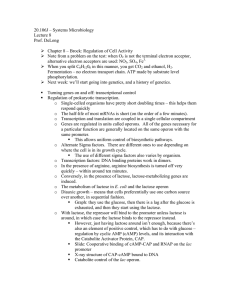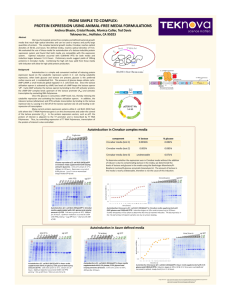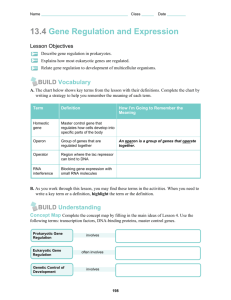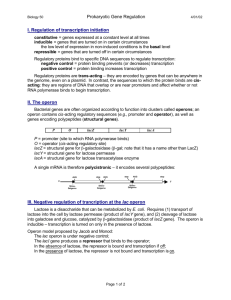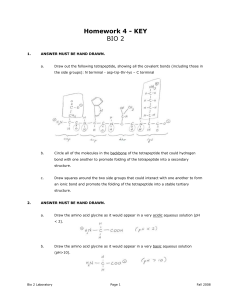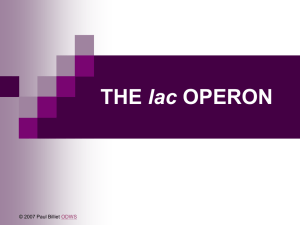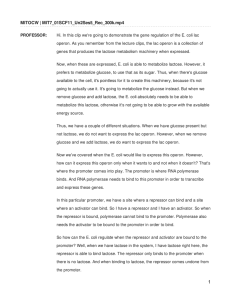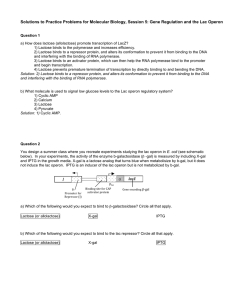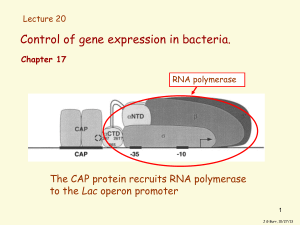Lac Operon: Regulation of Gene Expression in E. coli
advertisement
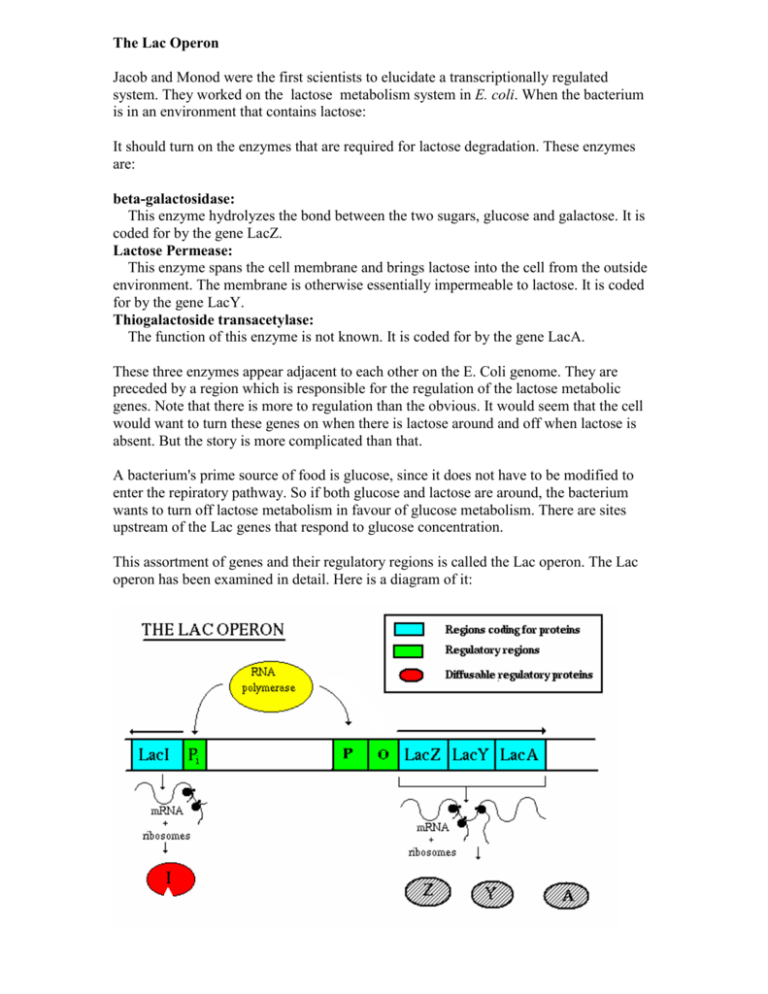
The Lac Operon Jacob and Monod were the first scientists to elucidate a transcriptionally regulated system. They worked on the lactose metabolism system in E. coli. When the bacterium is in an environment that contains lactose: It should turn on the enzymes that are required for lactose degradation. These enzymes are: beta-galactosidase: This enzyme hydrolyzes the bond between the two sugars, glucose and galactose. It is coded for by the gene LacZ. Lactose Permease: This enzyme spans the cell membrane and brings lactose into the cell from the outside environment. The membrane is otherwise essentially impermeable to lactose. It is coded for by the gene LacY. Thiogalactoside transacetylase: The function of this enzyme is not known. It is coded for by the gene LacA. These three enzymes appear adjacent to each other on the E. Coli genome. They are preceded by a region which is responsible for the regulation of the lactose metabolic genes. Note that there is more to regulation than the obvious. It would seem that the cell would want to turn these genes on when there is lactose around and off when lactose is absent. But the story is more complicated than that. A bacterium's prime source of food is glucose, since it does not have to be modified to enter the repiratory pathway. So if both glucose and lactose are around, the bacterium wants to turn off lactose metabolism in favour of glucose metabolism. There are sites upstream of the Lac genes that respond to glucose concentration. This assortment of genes and their regulatory regions is called the Lac operon. The Lac operon has been examined in detail. Here is a diagram of it: Element Operator (LacO) Promoter (LacP) Repressor (LacI) Pi CAP Purpose binding site for repressor binding site for RNA polymerase gene encoding lac repressor protein. Binds to DNA at operator and blocks binding of RNA polymerase at promoter promoter for LacI binding site for cAMP/CAP complex So let's look at the lac operon in action. When lactose is present, it acts as an inducer of the operon. It enters the cell and binds to the Lac repressor, inducing a conformational change that allows the repressor to fall off the DNA. Now the RNA polymerase is free to move along the DNA and RNA can be made from the three genes. Lactose can now be metabolized. When the inducer (lactose) is removed, the repressor returns to its original conformation and binds to the DNA, so that RNA polymerase can no longer get past the promoter. No RNA and no protein is made. Note that RNA polymerase can still bind to the promoter though it is unable to move past it. That means that when the cell is ready to use the operon, RNA polymerase is already there and waiting to begin transcription; the promoter doesn't have to wait for the holoenzyme to bind. We could say that the operon is primed for transcription upon the addition of lactose. When levels of glucose (a catabolite) in the cell are high, a molecule called cyclic AMP is inhibited from forming. So when glucose levels drop, more cAMP forms. cAMP binds to a protein called CAP (catabolite activator protein), which is then activated to bind to the CAP binding site. This activates transcription, perhaps by increasing the affinity of the site for RNA polymerase. This phenomenon is called catabolite repression, a misnomer since it involves activation, but understandable since it seemed that the presence of glucose repressed all the other sugar metabolism operons.

